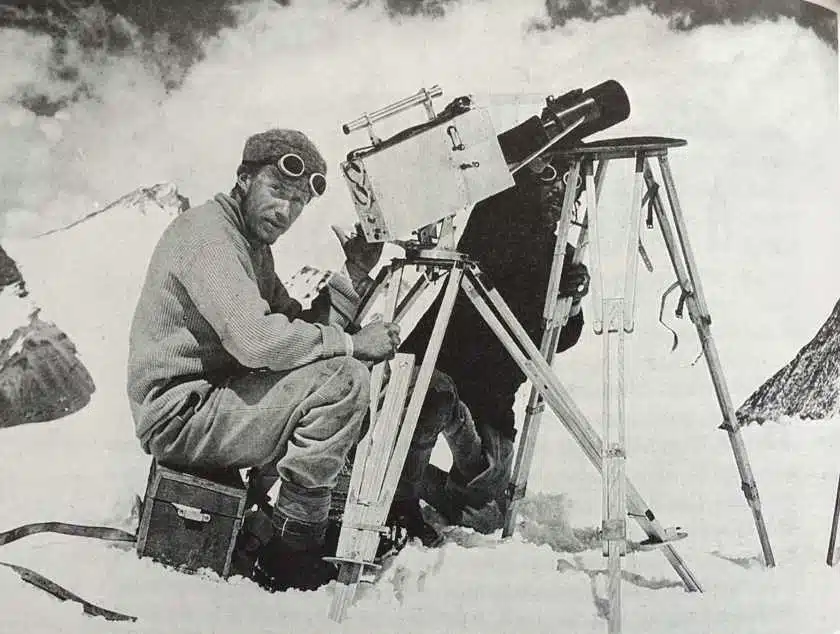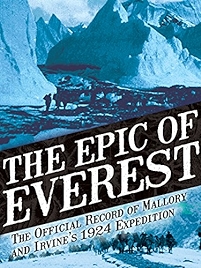A movie for every day of the year – a good one
5 April
Birkenhead Park opened, 1847
On this day in 1847, Birkenhead Park was opened in Birkenhead on the Wirral Peninsula, UK. It is the country’s first publicly funded civic park and was designed by Joseph Paxton, best known for designing the Crystal Palace exhibition space. A feat of engineering which required that the marshy site first be drained, before vistas could be built, avenues created, terraces and lakes built, it covers 226 acres and was financed by the selling of adjoining plots to local merchants, many of them from Liverpool. It was visited by American landscape architect Frederick Law Olmsted in 1850 and used by him as an influence on his design for Central Park in New York. Birkenhead Park remains in use to this day and is now a Grade 1 listed landscape, which grants it the highest level of protection against development.
The Epic of Everest (1924, dir: JBL Noel)
JBL Noel’s film is a record of the expedition led by George Mallory, of Mobberley, Cheshire, and Andrew Irvine, of Birkenhead, to climb Mount Everest. They were attempting to be the first people to reach the summit of the mountain but perished en route – whether on the way up to the top or on the way down having got to the top, no one knows.
It’s a silent film, though on the restoration by the British Film Institute that I watched there is a soundtrack by Simon Fisher Turner, which incorporates atmospheric sounds – yak bells, the wind – into an ambient score aiming for and achieving the bleak, the majestic, the foreboding. Intertitles do a lot of the establishing work, with Noel’s often colour-filtered visuals filling in the narrative holes, as the caravan of 500 men and animals wind their way up towards the highest town in the world, on the Tibetan side of the mountain. It’s a surprisingly easy film to follow and to watch.
Then, as now, there is a simplicity and picture-postcard directness about films set up mountains – the clear light, the defiant mountain features. Another layer of fascination of this film in particular is the way it acts as a bulletin from another age. Not just of western men attempting amazing feats of endurance in tweed jackets, gabardine and solar topis but also of the Tibetans, their hair woven into fantastic decorative patterns, their strange customs – we see a woman rubbing butter into the skin of her child before giving him a sun bath. Who knows what SPF yak butter is.
There is a shocking matter-of-factness about the entire film – “two of our men died” an intertitle tells us baldly at one point. It doesn’t say who, though it does tell us simply that they died of frostbite and cold. The fact that it doesn’t tell us their names means they were probably Sherpas. With the benefit of foreknowledge these deaths lend a poignancy to all the images which are to come. And finally, as we watch Irvine and Mallory heading off with oxygen to tackle the summit, having tried and failed without it, we already know they won’t come back, as did viewers who watched the film when it was first made.
For all its casual treatment of the Sherpa as a second grade human, there is much to admire in Noel’s film. Most obviously how lacking in false heroics it is – up comes an intertitle after Noel’s camera, shooting from a long way back with jerry-rigged optics, has established that the men are not coming back down. “What better grave for men who have lived in nature than a grave of pure white snow?” And what better memento than this strangely moving and frequently thrilling film.
Why Watch?
- An immense technical achievement
- The daddy of all the climbing films, from The Eiger Sanction to Touching the Void
- Different times, different values
- An expedition fuelled by mad heroism
The Epic of Everest – at Amazon
I am an Amazon affiliate
© Steve Morrissey 2014

